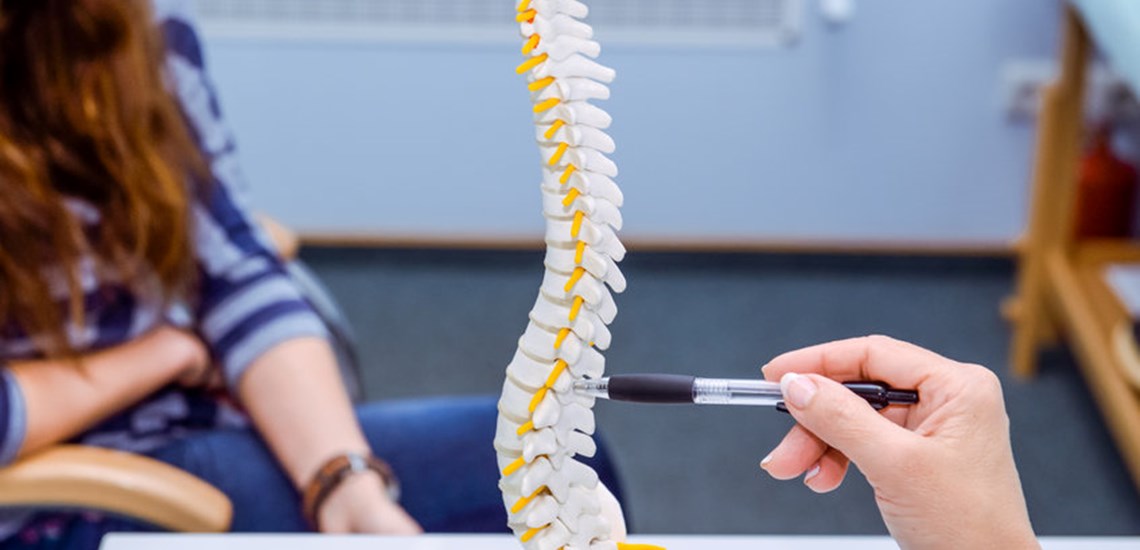Understanding Osteoporosis

According to the U.S. Department of Health and Human Services, nearly 10 million adults 50 and older develop osteoporosis. Osteoporosis is a condition that causes bones to weaken, leading to an increased risk of bone breaks and fractures. The good news is, osteoporosis is not an inevitable disease. By learning about the signs and symptoms of osteoporosis and steps you can take to prevent the condition, you can significantly reduce your chances of developing the disease.
What is Osteoporosis
Osteoporosis is a bone condition that causes weak and brittle bones. Bone is a living tissue. It breaks down and replaces itself to stay healthy and strong. In osteoporosis, new bone is not replacing itself as quickly as it’s breaking down, causing the bones to be weak and break easier. If left untreated, complications of osteoporosis can cause bone fractures, most commonly in the hips and spine.
Anyone can develop osteoporosis, but it’s most common in women after menopause. There are often no signs or symptoms of osteoporosis in the condition’s early stages. However, as osteoporosis progresses, a person may experience back pain, a stooped posture, loss of height, or easily broken bones. Additional risk factors include having a family history of osteoporosis and those with a more petite body frame. Osteoporosis is also more likely to develop in individuals who don’t consume enough calcium, those with gastrointestinal conditions, and people with a history of an eating disorder.
Preventing Osteoporosis
Minimizing risk factors is the best way to prevent the development of osteoporosis. Some steps to take include:
- Manage your calcium intake. Calcium helps bones stay strong, and most people require more calcium after 50. A few good sources of calcium include low-fat dairy products, dark leafy vegetables, and soy products.
- Ensure you’re getting enough vitamin D. Vitamin D helps the body absorb calcium. Most absorb all the vitamin D they need through sun exposure. If you don’t feel like you’re getting enough sun exposure, you can get vitamin D through foods, such as fish, or talk to your doctor about a vitamin D supplement.
- Exercise regularly. Regular exercise can contribute to strong bones. I can also build your muscle strength and improve your balance. Try to work out at least three days a week. Mix up your workout to include strength training and cardio to improve your overall health.
- Minimize tobaccos use and alcohol consumption. Excessive alcohol and tobacco use can contribute to weak bones. Try to limit your alcohol to no more than two drinks a day. If you smoke, do your best to quit. Talk to your doctor about treatment options if you’re having trouble stopping independently.
Treating Osteoporosis
Treatment for osteoporosis can vary depending on the stage of the condition and the potential risks for complications. A doctor may perform a bone density test to evaluate the risk of bone fractures. If the test shows low risk for fractures, a doctor may suggest lifestyle changes and fall prevention. Those with a higher risk of breaking bones may need medication. If you’re living with osteoporosis that is causing severe back or hip pain, your doctor may suggest therapies or surgery.
If you live with osteoporosis affecting the spine and are ready for treatment, the team at Mocek Spine Clinic can help. We offer advanced spine care solutions through patient-centered care including free bone density screening tests to all our patients. Our purpose is to provide compassionate care designed to allow you to live your life in the least amount of pain. Through our minimally invasive spinal treatments, you can heal more quickly so you can go back to living your life.
To learn more, you can make an appointment at our clinic or give us a call at 501.224.4001.